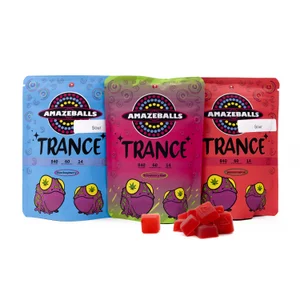The Evolution of Cannabis Extracts
Cannabis extracts concentrate the plant’s cannabinoid and terpene content into purified, intensified forms. Extracts have been created for centuries, but primitive methods involving solvents like alcohol limited purity. Modern technologies now produce pharmaceutical-grade extractions on a commercial scale.
The cannabis plant itself contains over 100 distinct cannabinoids, including cbn cannabinoid, cbc cannabinoid, and THC, leaf weed, along with aromatic terpenes and flavonoids. Different strains exhibit wide variations in their chemical makeup. Extraction serves several key functions:
- Isolates desired components like THC at extremely high levels, reaching 90-99% purity. It amplifies therapeutic or recreational potency.
- Removes plant material and impurities, providing a cleaner final product. More pure extractions improve flavor and inhalation experience.
- Enables precise, consistent dosing of products like vape cartridges by concentrating cannabinoids cbn to exact concentrations.
- Allows customizing extracts for specific conditions by selectively isolating ingredients like a high-CBD formulation.
- Provides administration options for cannabis that avoid smoking, like sublingual tinctures, edibles, topicals, and more.
Common Cannabis Extraction Techniques
A variety of methods can derive quality extracts from cannabis flowers, trim, and kief:
- Hydrocarbon extraction utilizes solvents like butane, propane, or hexane to strip cannabinoids and terpenes. It requires post-processing to remove residual solvent. When done properly, this technique yields potent concentrates.
- Ethanol extraction involves running a high-proof alcohol solvent through plant material and evaporating it. Food-grade ethanol is a safer option than hydrocarbons. It also extracts more chlorophyll, leading to greenish-tinted concentrates.
- CO2 extraction uses temperature/pressure-controlled carbon dioxide to pull cannabinoids and terpenes without co-extracting impurities selectively. It produces highly pure, solvent-free concentrates but at a higher operational cost.
- Cold extraction relies on ice water, dry ice, or freezer processing to make hash and kief without using solvents. Trichome crystals detach from plant matter through cold temperature agitation.
- Steam distillation extracts terpenes by heating cannabis to release aromatic vapors that condense into an oil form. It preserves volatile compounds well but does not extract cannabinoids.
These methods require extensive equipment, safety measures, and processing knowledge for success. Well-made professional extracts are preferable to potentially risky homemade attempts.
Popular Forms and Consumption Methods of Cannabis Concentrates
Various concentrate formats provide different properties and uses:
Oils: Cannabis oils allow precise dosing of cannabinoids and terpenes. It can be ingested orally, added to foods, vaporized, or used topically. Oils maintain stability longer than other extracts.
Waxes and shatters: These solid, dense extracts are consumed via dabbing or vaping. Hard, amber shatters have a glass-like texture, while softer waxes resemble earwax. Waxes retain more terpenes but may contain more impurities.
Hash: Hashish comes in soft, pliable solids and harder blocks. It is rich in trichomes and can be dabbed, vaped, or added to joints and pipes. Quality ice water hash is potent enough to hold its own with solvent-based extracts.
Live resin: Made via fresh freezing to retain terpenes, live resin provides a flavor profile extremely close to the original strain. It is used for dabs or cartridge vapes to enjoy a true cannabis taste.
Rosin: Heat and pressure extract cannabinoids and terpenes from trichome glands through the rosin tech process. Solventless with full flavor, rosin products include budders, jams, and scoopable saps.
Regardless of the final form, understanding a concentrate’s contents, third-party lab testing for safety, and proper dosing are key to their safe usage.
Conclusion
Modern extraction techniques have elevated cannabis from its crude plant origins into a sophisticated ingredient supporting a diversity of innovative products. Combining organic chemistry principles with cannabis botany enables the creation of concentrated formulations that are not possible with just dried flowers. Professionally produced extracts provide alternatives to smoking and offer more precise routes to harnessing the therapeutic benefits of this versatile plant. As legal barriers decrease and methods progress, extracts will likely become the future standard of cannabis consumption.
FAQs
Q: What is cbc cannabinoid?
A: CBC (cannabichromene) is a non-intoxicating cannabinoid found in cannabis that may have anti-inflammatory and pain-relieving effects.
Q: What is the key difference between Hash vs weed?
A: Hash is made by compressing trichome glands harvested from cannabis plants into a purified, concentrated form. Weed refers to dried cannabis flowers for smoking and vaping.
Q: Are cannabis extracts legal where weed is banned?
A: No, cannabis extracts are considered controlled substances like marijuana in regions where it is illegal. However, CBD extracts may sometimes fall into a legal gray area.
Q: Do all cannabis extracts contain THC?
A: No, there are THC-a free extracts that isolate other cannabinoids like CBD and do not cause intoxication or alter perception. However, most mainstream extracts do contain THC.
Q: What are the benefits of cannabis extracts?
A: Extracts offer higher potency and improved flavor profiles, allow precise dosing/standardization, provide smoke-free options, and target specific cannabinoids for various uses.




